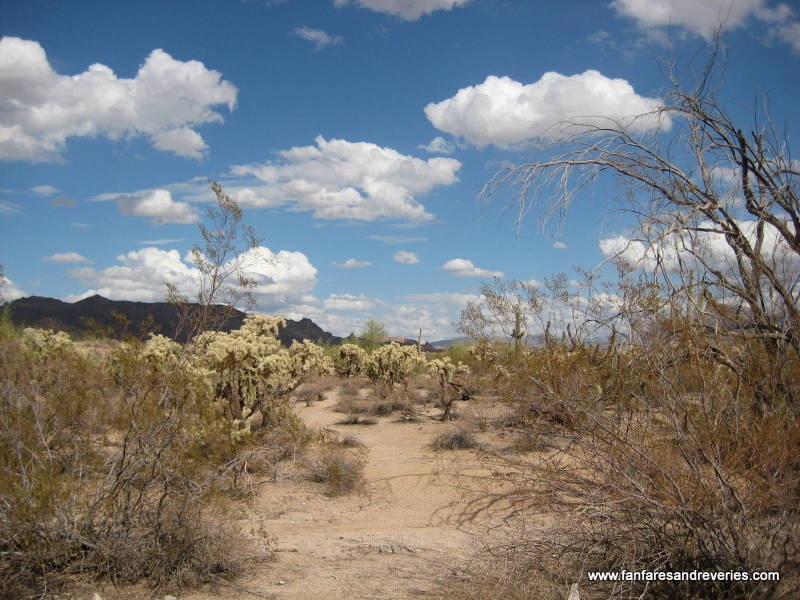

There are windswept days in the Arizona Desert where seemingly every color of the spectrum may be examined upon close inspection. This particular area is just north of McKellips Road and Crismon Road in East Mesa, an area where Usery Mountain Regional Park stands adjacent to Tonto National Forest. After a period of seasonal rain, it is amazing to see how green this area becomes, bursting with lime-green, yellow-green, emerald green and dozens of other varieties of spectacular hues. When the desert is dry, one notices the rust-colors, the tans, the yellow ochres, the bleached greys, faded green hues and ashen rocks. The wildlife also exhibits great variety of color, from flashy iridescent hummingbirds to motley colored songbirds and rustic desert quail. Once I visited a Park nearby and witnessed Harris hawks sailing high overhead, looking like noble black falcons on a cerulean blue sky. I am reminded of a phrase coined by American artist Wolf Kahn, a gifted painter and fantastic landscape artist. Kahn once told a group of Drew University art students that he was intrigued by "the tangles of nature," those outdoor spectacles we notice when we truly study and observe the natural environment which surrounds us. The Arizona Desert is indeed such an environment, filled with tangles and colorful spectacles stretching from the desert floor all the way to the blue-grey, purple and lavender mountain peaks.
0 Comments
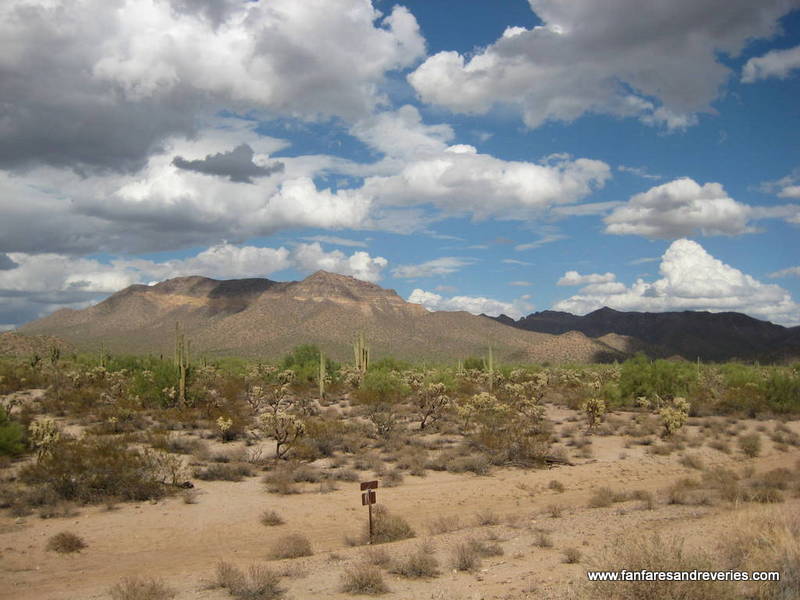 I love the contrasts between light & shadow upon the desert mountains of Arizona. This area is known as Usery Mountain Regional Park, located just 20 minutes from my home in Mesa. The Park encompasses 3,648 acres and is situated at the western end of the Goldfield Mountains, adjacent to the Tonto National Forest. Pass Mountain rises to 2,840 feet and features a spectacular hiking trail which allows views of 70 or more miles into the distance beyond. The lower Sonoran Desert is a fascinating place offering a wealth of rich color and a diverse variety of flora & fauna. On a bright day with palatial clouds sailing overhead, you can absorb the pulse and atmosphere of this remarkable environment. As you take in the sweet birdsong and distant calls of wildlife, for just a moment you begin to absorb the manifold beauties of the wilderness preserve. 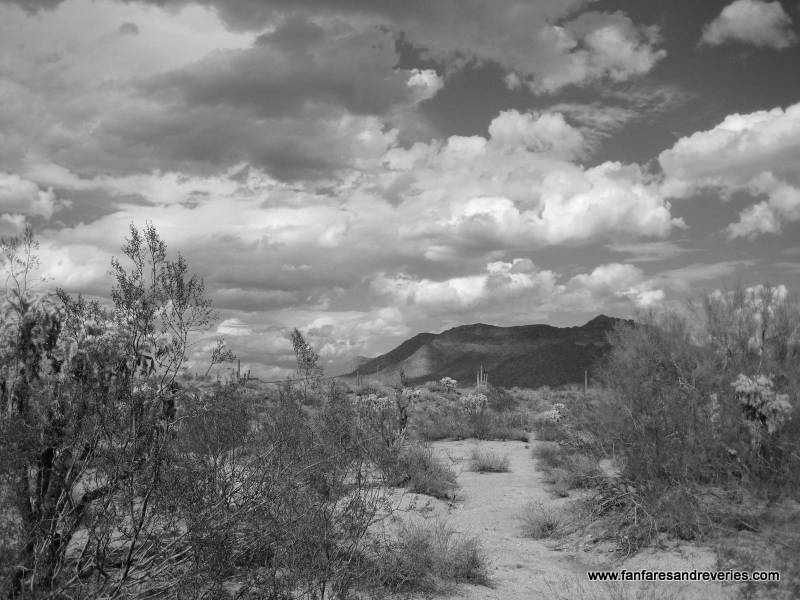
I have stood here in the midst of the Arizona desert, feeling the power of the sun momentarily dispersed through the traveling court of clouds high overhead. In the quiet of pristine clarity, one comes closer to the ever evolving sounds of nature, hearing the sometimes muffled cries in the distance interwoven with the startling immediate presence & pulse of desert wildlife. The desert quail and other birds often respond to the sounds produced via the Audubon bird call, coming closer to inspect the source of the tweets, chirps and foreshortened birdsong. One feels the immense carpet of time-change sweep from early morning to late afternoon, noticing the colors of the day as they morph from brilliant hues to faded transparencies. These are the feathers of time, where the mountains, rocks and trees diligently mark the passage of years, decades, centuries and beyond. How great a privilege to see and hear this remarkable environment, a place of everlasting Light & Shadow.
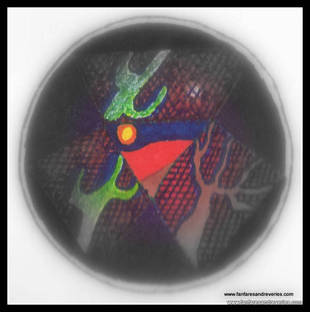 Image size 3" diameter, pen & ink, G. Tompkins Image size 3" diameter, pen & ink, G. Tompkins A Wilderness Journey & a Memorable Encounter Many years ago I drove from my home in Mesa to spend a day hiking in the Superstition Mountains at Lost Dutchman State Park, just north of Apache Junction, Arizona. It is a leisurely drive from where I live to the entrance of the Park, perhaps 30 to 40 minutes, with clear views all around and a rare majesty of the mountain/ desert interface on panoramic display. On this particular day I brought an Audubon Bird Call with me as well as some reading material, good hiking boots, comfortable clothing (safari style), a couple of snacks, plenty of water, and a nice cowboy hat to offer some shade from the hot desert sun. Early in the morning I started up the main trail and hiked a brief segment until I found a shady spot next to some palo verde trees and rock outcroppings. There I found a perfectly secluded spot where no one could see me and I could rest amidst the bounty of natural flora & fauna, taking delight in these extraordinary surroundings. A Startling Sound & A Brilliant Display As I became entirely comfortable in this desert hideaway, I began to read and to quietly mimic the sound of bird chirps through the use of the bird call. After a few minutes I suddenly became aware of a thundering sound and a delicate palpitation right next to my right eye and upper cheek. I thought for a moment that it was a very large bumble bee or honeybee and I just froze unable to move. This winged phenomenon was beating its wings wildly in an extraordinary manner, and I could hear it and feel it so distinctly, perhaps only 6 inches from my face. I turned my gaze ever so slightly toward this object and noticed very bright, iridescent colors, and a very long, slender and narrow bill. It was a beautiful hummingbird just hovering next to me, apparently attracted by the sound of the bird call and looking me over from cowboy hat to dusty boots! This moment only lasted a brief minute or two, yet I was so delighted and stunned to come that close to such a beautiful creature. The little fellow took off after a suitable inspection, allowing me to savor that spectacular chance meeting as a divine and cherished gift. The Audubon Bird Call The Audubon Bird Call was invented in 1947 by Roger Eddy, an author and member of the Connecticut State Legislature. This small device, just a couple of inches in length, is made of cast zinc (or other metal) and birch wood, made in Rhode Island and available from many specialty shops in either red or natural wood color. You can twist the metal knob and mimic the sounds of a host of different species of birds, from chirping sounds to song-like tweets. The wooden chamber may be treated with a bit of rosin (usually supplied by the manufacturer) in order to keep it at its best sound-producing capability. If kept dry and away from moisture or humidity, the bird call should last indefinitely and provide many hours of bird-watching enjoyment. Hummingbirds Hummingbirds are fascinating creatures to watch, with estimates of anywhere between 60 to 200 times per second of the flapping of their delicate wings. They experience a fast breathing rate, fast heartbeat, and high body temperature, can fly up to 60 miles per hour, are capable of incredible gyrations & mid-air maneuvers, and can live 5 to 6 years in the wild. There are some 320 species extant, covering a wide swath of geographical territory, often migrating appreciable distances. Their colors are fabulous in richness and vibrant in texture, shining in a spectacular manner, especially in the deserts of Arizona, a location noted for brilliant sunshine year round. Lost Dutchman State Park 40 miles east of Phoenix stands this remarkable sanctuary, nestled within the Sonoran Desert, featuring many trails which lead into the Superstition Wilderness and the Tonto National Forest. You can hike Siphon Draw Trail to the top of the Flatiron, an elevation of 4,800 feet, a height which affords a monumental view of the Valley below. At that elevation, Phoenix looks like a city made of toy blocks perhaps one quarter inch high along the distant horizon, and Mesa and Apache Junction fan out in dazzling array as far as the eye can see. Mule deer, coyote, javelina, jackrabbit, desert quail, and cactus wren populate the landscape here, with hiking trails and nature trails adding to the convenience of 72 campsites within the perimeter of the Park. The name "Superstition Wilderness" was apparently inspired by Pima Indian legends, and one may still find evidence of cliff dwellings and caves in this area. Salado or Hohokam Indians may have populated this landscape 100's of years ago, with Pimas, Apaches and Yavapais living here subsequently. In the 1800's this area became an Apache stronghold. In the 1840's the Peralta family of northern Mexico produced a gold mine here. In the 1870's Jacob Waltz and his partner Jacob Weiser apparently located the mine, but kept its location a well-guarded secret. After Waltz died in 1891, no one was ever able to find the exact location of "The Dutchman's" lost mine. 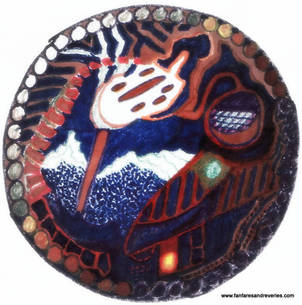 Pen & ink, 3" diameter, G. Tompkins Pen & ink, 3" diameter, G. Tompkins Journeys & Visions Along the Urban Landscape Often we encounter glimpses of things which might ordinarily escape our notice. In the 1960's I frequently traveled via the Jersey Central Railroad to Newark from the station at Dunellen on my way to New York City. As you approach the more densely populated areas, one notices a more commercial, urbanized landscape and fewer pockets of picturesque trees. Yet I distinctly remember gazing dreamily northwards from the windows of the eastward-bound train as I prepared for a day in the City. To Gauge the Map of Tracks, Trees & Hills As you approach Plainfield, there is a point somewhere in the vicinity of Leland Avenue which affords an expansive view to the north. On one eventful train trip many years ago, I just happened to casually glance in this direction and noticed a spectacular sight which I had never seen before. Just overhead from the dense pocket of trees to the north, in the distance I could discern a beautiful building shining in the early morning sun. It was on the southern side of one of the Watchung Hills, looking like a magnificent palace, a stone castle or royal chateau. As the train crosses Terrill Road, you can still see this building quite clearly, but the image fades as you edge toward Martine Avenue, eventually dropping from sight as you approach Westfield Road. This view lasts only a brief moment on the moving train, then vanishes altogether, not to be seen again until the long homeward-bound journey. A Vision Upon the Watchung Hills The beautiful building within sight of the train is known as Mount Saint Mary Academy, an independent school which offers a college preparatory program for young women, 9th through 12th grade. Situated in Watchung, just north of Plainfield along Route 22, the Academy is under the direction of the Sisters of Mercy of the Mid-Atlantic. The first building to house the Academy was erected in 1908, unfortunately destroyed by fire in 1911. The new building (the present structure) was rebuilt in 1912, featuring a prominent bell tower with the inscription "Gratias Agamus Domino Deo Nostro," (We give thanks to God). Whenever I had occasion to travel via the Jersey Central, I would earnestly look northwards to see if I could spot the bell tower and the imposing facade of this magnificent building. On certain days, if the weather was overcast and grey with slight rain or fog, you might totally miss the vision upon the hill and the grounds adjacent to the Academy. If the trees seemed to grow somewhat taller, the view could be completely cut off and suspended from sight. Sometimes you really had to search the horizon or you might miss the occasion in a matter of moments. Andante pastorale from Symphony No. 3 by Composer Carl Nielsen (1865-1931) There is a passage in this remarkable symphony (FS 60, Op. 27 "Sinfonia espansiva," composed in 1910-11) where two soloists enter the second movement and sing wordlessly in the "Ah" vowel, echoing one another and sounding profoundly beautiful together amidst the splendor of the orchestra. These two voices seemingly appear out of nowhere and rise to glorious heights of harmonious expression, drawing the listener in toward one of the most transcendent moments in all of Classical music. I find this music to be thrilling and resplendent in an all-encompassing manner, especially in the version offered by Dacapo with Michael Schonwandt conducting the Danish National Radio Symphony Orchestra. In this performance, Inger Dam-Jensen sings the soprano part and Poul Elming the tenor part, recorded in cooperation with Danmarks Radio. (This recording is also available on Naxos.) A Brief But Glorious View The second movement of Nielsen's 3rd Symphony illustrates how a moment of divine music may inspire us in an extraordinary and long-lived manner. It is just a brief interlude in the overall structure of the Symphony, a passage which Nielsen refers to as "the purest idyll." Yet this passage reflects a visionary summit peak, a moment where voices soar wordlessly over the enchantment of the symphony orchestra. It is a reminder of the art of perspective, a vital reflection of looking upward and outward and noticing something we might have previously missed. From the train to a brief vision of the mountainside Academy, from a momentary passage in music, or from the written notes of Carl Nielsen regarding his Symphony, we may each engage "...a certain expansive happiness about being able to participate in the work of life and the day and to see activity and ability manifested on all sides around us." 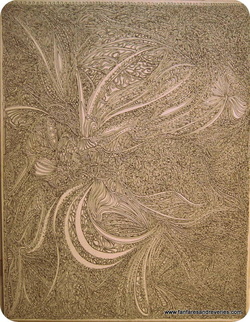 Pen & ink, 15"x19", G. Tompkins Pen & ink, 15"x19", G. Tompkins A Journey Across An Imaginative Landscape In the late 1960's I often had occasion to travel via the Jersey Central Railroad from the Dunellen train station all the way to Newark, traversing the Hudson Tubes and eventually arriving at New York City. As an Art student enrolled in the New York Art Semester at Drew University, I was expected to visit museums and galleries, engage in class field trips to meet artists in their studio environments, and to keep a noteworthy journal of my thoughts, perceptions and observations. The Jersey Central provided a convenient method of commuting to NYC and I quickly became fond of train travel as an alternative to taking a car or bus to the City. The route began in Dunellen, traveled through Plainfield, Fanwood, Scotch Plains, Westfield, Garwood, and Cranford, finally reaching the great train station at Newark, a place of enormous overhead structures and miles of parallel tracks packed with passenger trains. The View From a Train Window There occurs a brief moment as you leave the train station at Fanwood heading East where the tracks curve slightly to the right and the train allows a view into the backyards of some vintage homes clustered along a stretch of wooded parcels of land to the North of the tracks. At this point the train seems to be at a somewhat higher elevation, perhaps as much as 10 feet higher than the backyards of the homes, giving the effect of looking downwards into a miniature canyon or autumnal valley. Just at this juncture of time and space, I would remember the lines from one of the songs by Judy Collins on her 1967 album "Wildflowers," a critically acclaimed album arranged and conducted by Joshua Rifkin. All of the songs on that recording are gems, but the one which keeps coming back to me is entitled "Albatross," one of the most beautiful works of art which Judy ever recorded. The first lines read, "The lady comes to the gate dressed in lavender and leather...," a poetic entry into a visual field of splendor. The song continues, "...She hears the steeple bells ringing through the orchard all the way from town." I do not remember if there were any gates that could be seen from the train windows, but there were certainly plenty of places that a gate might provide a beautiful entryway into these lovely homes with their petite backyards. Similarly one could occasionally view a church steeple briefly at some distance from the tracks, or imagine the bells heard in each neighborhood, or envision the neat topography of land laid out from the town center to the small wooded parcels dotted along the train tracks. A Poetic Song with Evocative Images Judy's song continues with vibrantly resonant language, pinpointing the grandeur of the human landscape as well as the natural landscape. "Many people wander up the hills from all around you, making up your memories and thinking they have found you." As I peer through the train windows I begin to see the history of the moment and the pattern of the events and the people in my life. From station to station, from track to track, from city to city....these thoughts and perceptions become the dialogues of a young art student transformed via time and the ongoing process of maturity. Judy speaks of "the embroidery of life" and then paints a picture which becomes indelibly etched in my artistic heart and mind. "...And in the night the iron wheels rolling through the rain, down the hills through the long grass to the sea." Joshua Rifkin's arrangement and orchestral conducting soar with an affinity for Judy's lovely voice during this powerful passage. There is a rise and fall of evocative feeling in this special music, conjuring images which remain impressively vivid. Final Impressions Judy's song "Albatross" closes with some perceptive observations on the continuity of life. "Day and night and day again, and people come and go away forever." Who hasn't reflected upon our days of schooling or early family life or days spent working or travelling or interacting with others via relationships? Wave upon wave of events may occur as cycles existing in time, like the train excursions via the Jersey Central, peering out the train windows and recording the impressions one may encounter or visualize along the way. Then in the closing lines to the song, Judy so eloquently, so elegantly, quietly recites a marvelously resonant and poetic message, "Come away alone, ...come away alone....with me." This is the memorable language of love, a time and a place which can be viewed as a tender invitation, a noble passage, an everlasting entrance or an eternal gate. 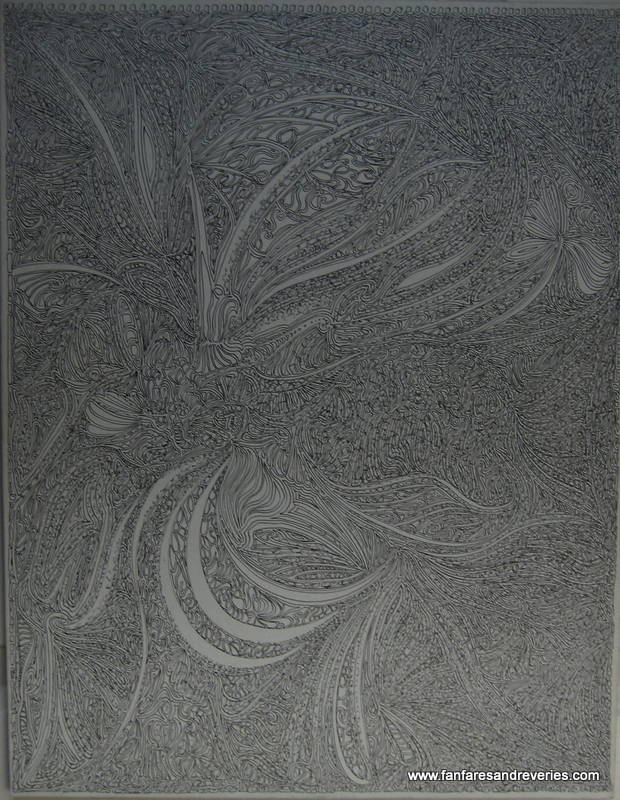 Pen & ink drawing, 15" x 19", on artist's board. Inspired by the many films and documentaries created by the noted French oceanographer, scientist, researcher & filmmaker Jacques Cousteau (1910-1997). The oceans of the world offer fabulous varieties of color, shape, form & intricate life. Artist: Glenn Tompkins |
Author
|
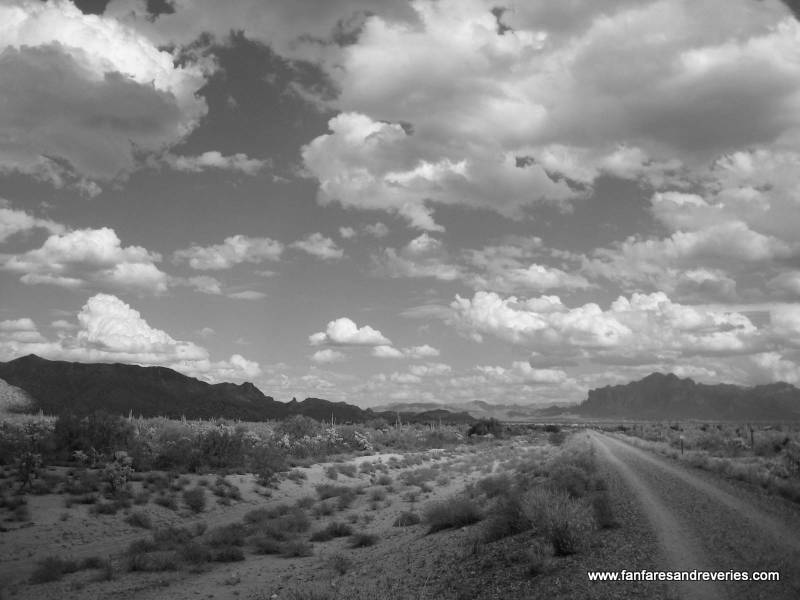
 RSS Feed
RSS Feed